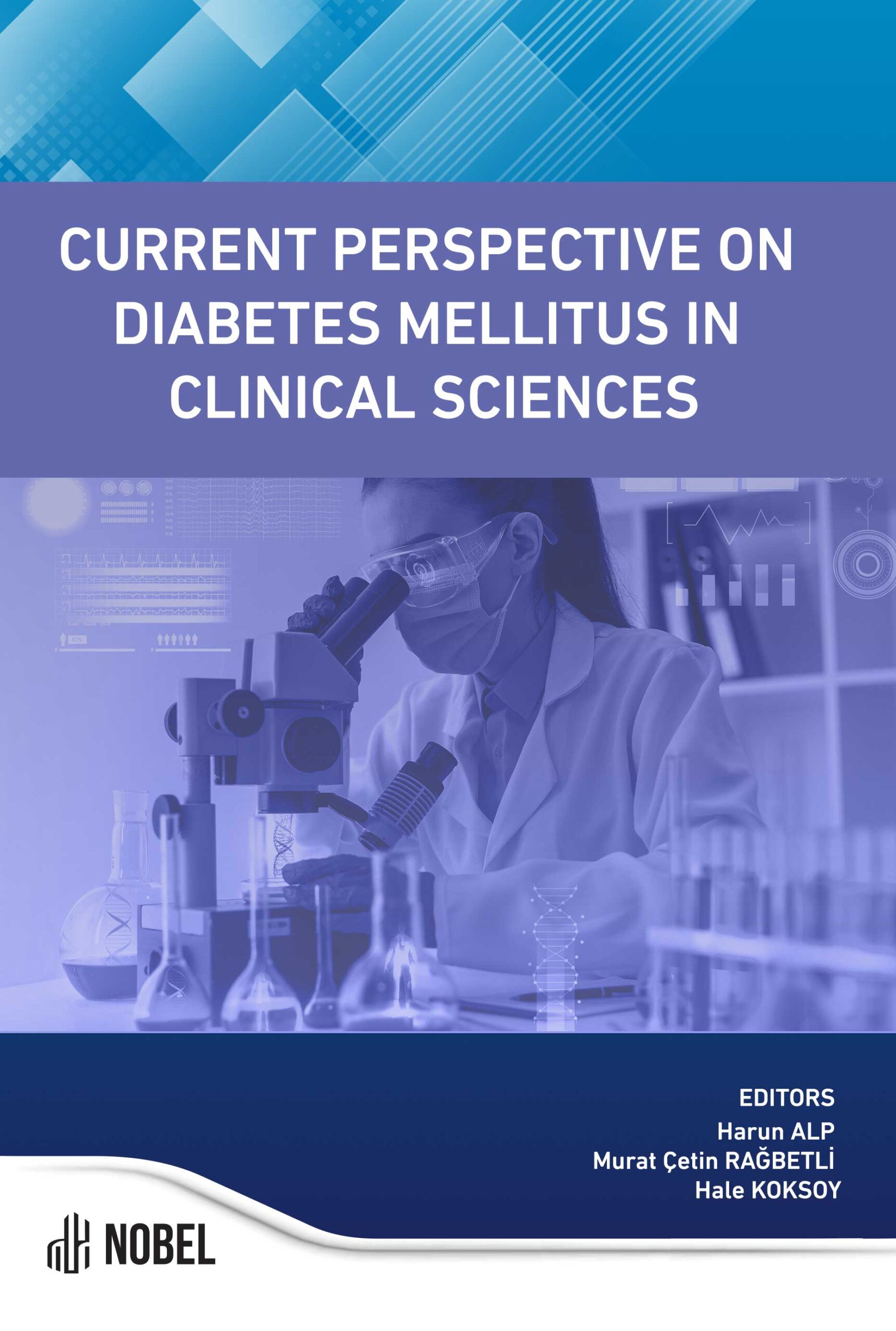Pathogenesis of Diabetes Mellitus
Burcu Sanal Yilmaz (Author)
Release Date: 2023-09-14
The pathogenesis of diabetes mellitus involves complex mechanisms centered around insulin deficiency, resistance, or both. In type 1 diabetes mellitus (T1DM), an autoimmune destruction of pancreatic beta cells leads to insulin deficiency, resulting in hyperglycemia. Conversely, type 2 diabetes mellitus (T2DM) is characterized by insulin resistance in peripheral tissues, combined with impaired insulin secretion from [...]
Media Type
PDF
Buy from
Price may vary by retailers
| Work Type | Book Chapter |
|---|---|
| Published in | Current Perspective on Diabetes Mellitus in Clinical Sciences |
| First Page | 45 |
| Last Page | 54 |
| DOI | https://doi.org/10.69860/nobel.9786053359111.5 |
| ISBN | 978-605-335-911-1 (PDF) |
| Language | ENG |
| Page Count | 10 |
| Copyright Holder | Nobel Tıp Kitabevleri |
| License | https://nobelpub.com/publish-with-us/copyright-and-licensing |
Burcu Sanal Yilmaz (Author)
Assistant Professor, Karamanoglu Mehmetbey University
https://orcid.org/0000-0002-3752-5893
Kumar V, Abbas A, Aster J Robins and Cotran Pathologic Basis of Disease, Ninth Edition, 2015.
Barratt BJ, Payne F, Lowe CE, Hermann R, Healy BC, Harold D, … Todd JA. Remapping the insulin gene/ IDDM2 locus in type 1 diabetes. Diabetes.2004;53(7):1884-1889.
Janeway CA Jr, Travers P, Walport M, Shlomchik MJ. Immunobiology, 6th ed. London, UK: Garland Science, 2005.
Wildin RS, Freitas A. IPEX and FOXP3: clinical and research perspectives. Journal of Autoimmunity 2005; 25 (Supplement): 56–62.
Zatalia SR, Sanusi H. The role of antioxidants in the pathophysiology, complications, and management of diabetes mellitus. Acta medica Indonesiana. 2013;45(2):141–7.
Lynch J, Helmrich SP, Lakka TA, Kaplan GA, Cohen RD, Salonen R, Salonen JT. Moderately intense physical activities and high levels of cardiorespiratory fi tness reduce the risk of non-insulin-dependent diabetes mellitus in middle-aged men. Arch Intern Med. 1996;156(12):1307-1314.
Czech MP. Insulin action and resistance in obesity and type 2 diabetes. Nat. Med. 2017; 23: 804–814.
Petersen KF, Shulman GI. Pathogenesis of skeletal muscle insulin resistance in type2 diabetes mellitus. Am. J. Cardiol. 2002; 90: 11G–18G.
Petersen KF, Shulman GI. Cellular mechanism of insulin resistance in skeletal muscle. J.RSoc.Med.2002; 95 (Suppl. 42): 8–13.
Wamique M, Ali W. Rizvi Fatima Nishat. Role of free fatty acid and elevated VLDL in type II diabetes mellitus - a review. EJPMR. 2015;2(7):115–9.
Oh YS, Bae GD, Baek DJ, Park EY, Jun HS. Fatty acid-induced lipotoxicity in pancreatic beta-cells during development of type 2 diabetes. Front Endocrinol. 2018;9(07):1–10.
Al-Goblan AS, Al-Alfi MA, Khan MZ. Mechanism linking diabetes mellitus and obesity. Diabetes, Metabolic Syndrome and Obesity: Targets and Therapy. 2014;7:587–91.
Cerf ME. Beta cell dysfunction and insulin resistance. Front Endocrinol. 2013;4(03):1–12.
Han SJ, Boyko EJ. The evidence for an obesity paradox in type 2 diabetes mellitus. Diabetes Metab J. 2018;42(3):179–87.
Tangvarasittichai S. Oxidative stress, insulin resistance, dyslipidemia and type 2 diabetes mellitus. World J Diabetes. 2015;6(3): 456–80.
| onix_3.0::thoth | Thoth ONIX 3.0 |
|---|---|
| onix_3.0::project_muse | Project MUSE ONIX 3.0 |
| onix_3.0::oapen | OAPEN ONIX 3.0 |
| onix_3.0::jstor | JSTOR ONIX 3.0 |
| onix_3.0::google_books | Google Books ONIX 3.0 |
| onix_3.0::overdrive | OverDrive ONIX 3.0 |
| onix_2.1::ebsco_host | EBSCO Host ONIX 2.1 |
| csv::thoth | Thoth CSV |
| json::thoth | Thoth JSON |
| kbart::oclc | OCLC KBART |
| bibtex::thoth | Thoth BibTeX |
| doideposit::crossref | CrossRef DOI deposit |
| onix_2.1::proquest_ebrary | ProQuest Ebrary ONIX 2.1 |
| marc21record::thoth | Thoth MARC 21 Record |
| marc21markup::thoth | Thoth MARC 21 Markup |
| marc21xml::thoth | Thoth MARC 21 XML |

